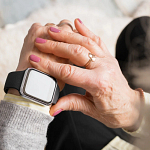Understanding Falls and Fractures
Falls and fractures form a significant part of injury cases, especially among the elderly. A fall is fundamentally an event which results in an individual coming to rest inadvertently on the ground or other lower level. A fracture, on the other hand, is a break, usually in a bone. When a fall leads to a severe impact, it can result in a fracture.
Common Causes of Falls Leading to Fractures
Falls often occur due to a combination of factors including physical, environmental and health conditions. Some common causes include lower body weakness, difficulties with balance, vision problems, medications, and hazards such as clutter or uneven steps.
Statistics and Demographics Related to Falls and Fractures
According to the CDC, one out of five falls causes a serious injury such as broken bones. Additionally, each year, 3 million older people are treated in emergency departments for fall injuries.

Immediate Response to Falls and Fractures
Recognizing the importance of immediate medical attention is crucial when dealing with falls and fractures. The faster a patient receives professional healthcare, the greater their chances for full recovery. Therefore, never underestimate the severity of a fall, especially in seniors, as it can lead to serious health complications.

First Aid Measures and Emergency Response
Appropriate first aid measures can make a significant difference in the outcome of a fall or fracture. It’s essential to keep the injured person calm, avoid moving them unnecessarily, and seek professional help immediately. Always remember that your emergency response can greatly affect the patient’s recovery process.

Medical Tests and Diagnosis for Fractures
Upon reaching a medical facility, a series of tests and examinations will be conducted to diagnose the fracture. These may include X-rays, CT scans, or MRI scans. The information gathered from these tests guides the healthcare provider in creating the most effective treatment plan.

Understanding Treatment Options for Fractures
When you suffer a fracture, it’s crucial to know your treatment options. These typically fall into two categories: non-surgical and surgical treatments.
Non-Surgical Treatments
- Casting: A cast is a shell, often made from plaster or fiberglass, which immobilizes the broken bone, allowing it to heal naturally.
- Splinting: Similar to casting, splinting also restricts movement but allows for more flexibility and swelling.
- Braces: A brace provides support, control movement, and prevent further injuries.
For more information on non-surgical treatments, check out this resource.
Surgical Treatments
- Pins, Plates, and Screws: These are often used to hold pieces of broken bone in place.
- Rods: For larger bones, rods may be inserted into the bone marrow cavity to provide stability.
Learn more about surgical treatments here.
Role of Pain Management in Fracture Treatment
Pain management plays a significant role in fracture treatment. It not only provides comfort but also allows for more effective rehabilitation. Methods may include medication, nerve blocks, and more. Learn more about pain management in fracture treatment here.
Understanding the Duration of Hospital Stay and Influencing Factors
The duration of a hospital stay following a fall or fracture can vary greatly. Factors such as the severity of the injury, the patient’s overall health, and the speed of initial healing all play a crucial role. According to the National Institutes of Health, the average hospital stay for hip fracture patients is approximately 6.3 days.

The Importance of Physical Therapy in Early Recovery
Physical therapy is a cornerstone of early recovery. Regaining strength and mobility can help patients return to their daily routines more quickly. The British Medical Journal reports that early physical therapy intervention can significantly improve outcomes.
Role of Nutrition in Healing Fractures
Nutrition can’t be underestimated in fracture recovery. Adequate intake of proteins, vitamins, and minerals can speed up the healing process. The American Journal of Clinical Nutrition emphasizes the role of nutrients, particularly protein and calcium, in healing fractures.

The Importance of a Comprehensive Rehabilitation Plan
A comprehensive rehabilitation plan is imperative in the journey to long-term recovery from falls and fractures. It’s not just about physical healing but also restoring functionality and independence. This plan goes beyond immediate medical care, focusing on a multidisciplinary approach for holistic recovery.
The Role of Physical and Occupational Therapy
Physical therapy helps restore mobility and strength, while occupational therapy focuses on everyday skills and activities. Both are crucial for a person to regain their independence and return to normal life.

Psychological Aspects of Recovery
Coping with immobility, pain, and the fear of falling can be mentally exhausting. Therefore, psychological support is a key component of the recovery process. It helps patients adjust to their new normal and overcome any mental hurdles that may impede their recovery.

Preventive Measures and Risk Reduction for Elderly Falls
As we age, our risk of falling increases dramatically. According to the Centers for Disease Control and Prevention (CDC), one out of four older people falls each year. Therefore, implementing preventive measures and managing risk is crucial.
Importance of Fall Prevention in the Elderly
Preventing falls is not merely about avoiding immediate injury. It’s about maintaining independence and quality of life. Falls can lead to fractures, which often require lengthy recovery periods and can drastically reduce mobility.
Home Safety Modifications to Prevent Falls
Modifying your home can significantly reduce fall risks. This may include installing grab bars in the bathroom, improving lighting, and removing tripping hazards like loose rugs. The National Institute on Aging provides an extensive guide on home modifications for fall prevention.
Regular Exercise and Strength Training
Regular exercise and strength training can improve balance, coordination, and muscle strength, all of which are key in preventing falls. Consult with a healthcare professional for appropriate exercises.

Role of Caregiver Support in Recovery
Support from caregivers plays a pivotal role in the recovery process after a fall or fracture. Caregivers not only assist with day-to-day tasks and mobility, but also provide emotional support that boosts the patient’s morale, ultimately fostering a faster recovery.

Emotional Support and Motivation
Recovery from falls and fractures can be a taxing journey. The emotional support provided by caregivers often acts as a motivational force, encouraging patients to persevere through the recovery process. Studies show that emotional support can significantly improve recovery outcomes.
Helping with Daily Tasks and Mobility
Post-fall recovery often includes a period of decreased mobility. This is where caregivers step in, helping with daily tasks and facilitating mobility exercises. According to the Centers for Disease Control and Prevention, caregiver assistance in this regard is crucial in preventing further falls and facilitating rehabilitation.

Living with a Fracture: Adapting and Moving Forward
Fractures can significantly affect the quality of life, leading to physical discomfort and changes in day-to-day activities. Research shows that fractures can impact mental health, causing frustration and anxiety due to mobility limitations.
Adapting to these changes requires patience and perseverance. It is crucial to accept your new normal and gradually incorporate exercise into your routine. Physical therapy can facilitate this process. Mayo Clinic provides useful insights into the benefits of physical therapy.

Remember, recovery isn’t a race. It’s about steady progress and giving your body the necessary time to heal. The National Institute of Arthritis and Musculoskeletal and Skin Diseases provides helpful resources on managing fractures and supporting recovery.
The Importance of Patience and Perseverance in Recovery
Recovering from a fracture is a journey, not a destination. Patience is paramount in this process, as rushing recovery can lead to complications. Perseverance is equally essential, as physical therapy and lifestyle changes can be challenging but are crucial for recovery.
.





